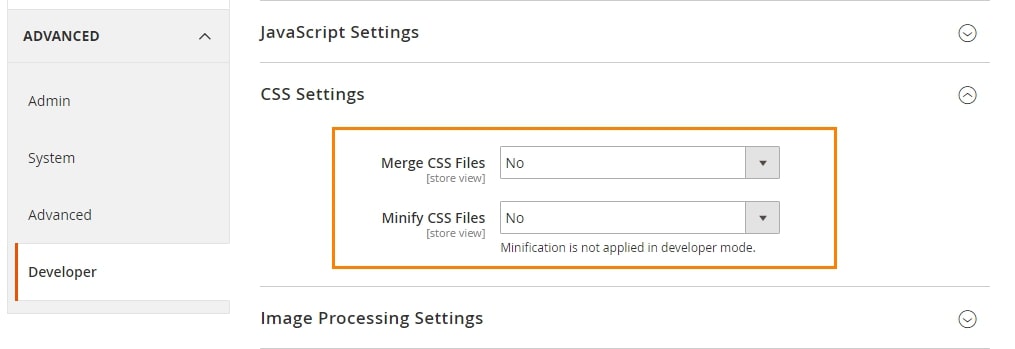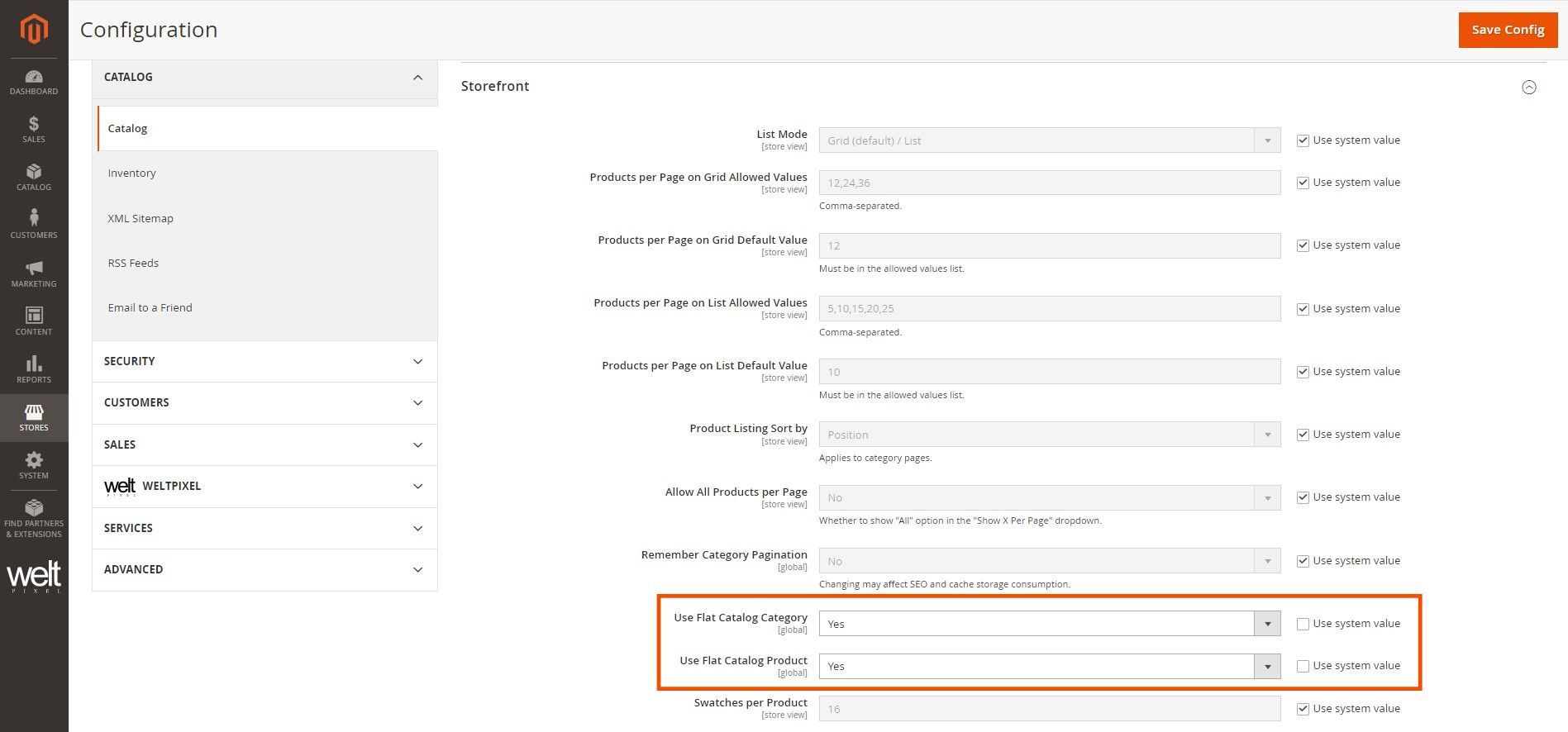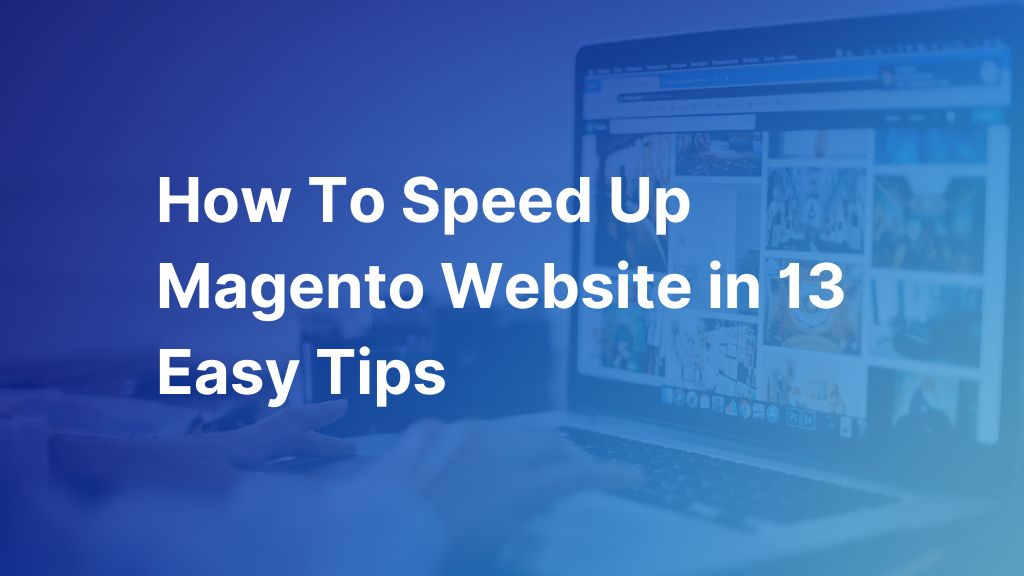Quick response time plays an important function in enhancing the customers’ shopping experience. Even though a lot of retailers utilizing Magento 2 have the problem with their web pages being loaded slowly, a considerable number of users report high speeds and a satisfying performance.
That being said, your Magento 2 site might suffer from some slow load if there are some issues with the website’s loading speed. This is a common issue frequently encountered on ecommerce sites though it may be rectified. This article will offer you practical tips on how to speed up Magento website.
Why is Magento Website Slow?
Table of Contents
The very common problem of Magento 2 is its slow and unresponsive performance which creates much irritation from the site owners, developers and users. Various factors contribute to this issue:
- Hosting: Websites hosted in a distant area may take a longer time to load.
- Hardware: Magento needs to be installed on machines with sufficient hardware, preferably with at least 2GB of memory to operate flawlessly.
- Data caching: Absence of caching reduces a website’s speed to recall the preceding user actions which result in performance lag.
- Catalog: Among catalogs some of them can do a good job on supporting page loading speed, while some may slow down the loading process.
- CSS and JS: The problem of leaving CDN CSS and Javascript files uncombined results in a higher number of page load times and site slowdowns.
- Excessive JavaScript: Large JavaScript adds times to web pages loading.
- Outdated Magento version: A version of Magento of the newer edition will improve speed and security.
- Numerous extensions: Overloading the site with plenty of tools and features can cause performance slips.
- Unused tools: Faster and better implementation can be achieved by removing the tools that are not used.
- Debug logs: When large log files are not correctly handled, the performance of a site can be detracted.
- Excessive Varnish cache: Occasionally, having Varnish cache predominantly can result in a failure
- Lack of CDN: CDN can definitely help to increase the website loading speed.
- Non-secure connections: Using SSL is likely to decrease the page loading time up to 15%.
By focusing on these areas you can effectively optimize the speed and performance of Magento 2 website, providing a user-friendly experience to your customers.
How To Speed Up Magento Website
Tip 1: Evaluate the Performance of Your Magento Website
The first thing to do to improve the performance of the Magento 2 website is to assess your website thoroughly as it is. Before changing the existing flow, it is imperative that the current way your store is operating should be assessed. Even though your website has a lot of pages, you should concentrate on assessing the primary pages that people visit most frequently, such as: a homepage, product pages, category pages, cart page, and checkout page.
Google PageSpeed Insights is an expedient action when it comes to the evaluation of a website’s speed. The rankings may be presented after the test in the form of scores that demonstrate how your site performs. In default position your Magento website is having a low speed if these scores are shown as yellow or red.

Tip 2: Upgrade Your Magento Store
Checking Magento for the latest version and if possible updating is the simplest and therefore one of the most effective ways to boost its speed. Guaranteed performance Improvements and many other changes will continue to follow every upgrade to Magento. In Magento updates, there are widely produced post features, improvements, and bug repairs aimed at maximizing users satisfaction.
So you can have a fast website for your store, it is hereby advised to keep your store up to date with the most recent version it can support.
Here is a full guide to upgrading Magento to the latest version: How to Upgrade Magento 2.3 to 2.4.7
Tip 3: Select the Appropriate Hosting Service
It’s critical to choose a hosting company that puts dependability, security, and speed first. Choosing inferior hosting can potentially cause issues with your Magento store’s security and performance.
Despite the allure of less expensive hosting, choosing a budget option frequently means spending a lot of time and energy troubleshooting server problems. Therefore, it’s best to go with managed hosting services so that you may focus just on growing your company.
Additionally, it’s essential to ensure that your hosting provider meets the Magento system requirements. These requirements include PHP 8.x, MariaDB 10.x, MySQL 8.x, Elasticsearch 7.x, Composer 2.x, among others.
READ NOW: 26+ Best Hosting for Magento 2 Sites 2024
Tip 4: Contact Magento Speed Optimization Agency
Enhancing your Magento website’s speed and functionality is essential to providing a flawless user experience and increasing conversions. In order to efficiently attain the best possible outcomes, think about collaborating with a Magento Speed Optimization Agency. These companies specialize in the analysis, diagnosis, and optimization of Magento websites to guarantee their flawless operation and speedy loading times.
Consulting with a Magento optimization agency gives you access to the knowledge and experience of seasoned experts who are able to identify areas for development and comprehend the subtleties of Magento’s design. They use cutting-edge methods and resources to optimize server settings, optimize the code of your website, and put performance-boosting tactics into action.
For expert assistance in speeding up your Magento website, explore the Magento 2 speed up consulting package offered by BSS Commerce. This comprehensive package includes thorough performance analysis, personalized optimization recommendations, and expert consultation to help you achieve significant speed improvements. With their assistance, you can ensure that your Magento website delivers exceptional performance, resulting in improved user satisfaction and higher conversion rates.
Tip 5: Analyze and Review Third-Party Modules & Potential Logic Issues
Such third-party Magento 2 extensions can lead to some issues that may turn out to be the reason for the failure of the Magento business. Hence, the easiest way to fix it would be to check if all the extensions in your browser are updated to their most recent versions, and if any of them is taking a lot of time to load, try additional ones.
To make sure real time app is reliable, functions as well as compatible some trusted vendors should be used for buying third-party extensions
More so, the assessment of the third-party modules alongside the optimization hearsay that were previously explained in this procedure is critical also for your Magento 2 store. Besides the Magento version update issue, the system could have some extensions that may no longer work properly and become incompatible. In case there are any of the extensions that are not needed or are incompatible with the version of Magento you are using, then it is advisable to remove them from the system or update them to the versions that collaborate with the Magento version on the system.
Evaluate the CMS for major pages, e.g., checkout, products, categories, and homepage. If you disable an extender and witness your store’s speed up, you have broken the speed barrier caused by yet another problem that Magento has.
Tip 6: Update Database & Search Functionality
Cleaning up your store’s log table and improving the way search function works are critical when trying to increase Magento 2 performance. Failure to address these key elements can result in a lagging system that will eventually reach storage capacity limitations. Here’s what you need to know:
Stop Using Flat Catalogs
Magento speed optimization was mainly made by converting to a flat catalog in the past. However, architectural alterations in the latest Magento versions rendered the above-mentioned approach ineffective. Avoiding Magento 2.1.x and greater version catalogs and convenience index are the qualities that you need to have to resolve the issues.
Clean Database Logs
A database log can accumulate after time and eventually be the cause of the site deceleration. Regrettably, Magento 2 does not have any controls for these database logs which clear themselves automatically. To improve efficiency, an engineering intervention is required that should include cutting selected log tables into MySQL using the PHPMyAdmin or such tools.
Use ElasticSearch/OpenSearch
To enhance search accuracy and performance, try ElasticSearch or OpenSearch. These solutions play a vital role in the latest version of Magento (2.4 and up), by serving as a starting point for a fast search and scalable experience. The installing process consists of the deployment of ElasticSearch on a separate computer and Magento Admin Panel configuration.
Arrange Magento Indexers
Your indexers play a critical role in making the data access easy and fast in Magento. By using newer indexers, an updated index brings faster data retrieval and optimization of the overall performance. Use the CLI command “php bin/magento indexer:”reindex” replaces manual “rebuild” indexes.
Make sure to consider the possible problems of indexers, for example, the slowness of the site while the rules are triggered, and think about custom indexers for each store.
Through implementing these techniques, you can significantly increase the speed and efficiency of your Magento website, which in the long run will improve the quality of the browsing experience for each user and lead to a higher conversion rate.
Tip 7: Optimize Static Content (CSS, JS, Images)
The bulk of the stuff that your browser needs to pull comes from the images and the graphic components. The subsequent action taken is made by compressing and extracting CSS and JavaScript files in order to minimize the page loading time.
Firstly, switch Magento 2 into production mode by executing the command
/bin/magento deploy:mode:'production
For JavaScript files:
- Go to the back end and login to the admin area and then select Stores > Configuration > Advanced > Developer > JavaScript Settings.
- Setting “Merge JavaScript Files” and “Minify JavaScript Files” to Yes.

For CSS files:
- Go to the backend and then Configuration > Advanced > Developers > CSS Settings > Stores.
- Set “Merge CSS Files” and “Minify CSS Files” to Yes.

Once you have finished the preceding steps, you will need to go ahead and Save Config and clear your cache in order to ensure the changes work properly.
Tip 8: Opt for Flat Catalog Indexing
A database is utilized in Magento as in Excel data is for data storage. The database effectiveness stops when it has the maximum data with all additional data being stored separately which in fact substantially slows down store execution.
In order to decrease the volume of data that is stored you can enable the Flat Catalog Category and Flat Catalog Product features of Magento. Allowing such options will increase the efficiency of your store.
Magento automatically creates and updates flat tables each indexing period during the process. Here’s how you can enable flat tables as an administrator in the Magento Admin:
- Navigate to Stores > Configuration > Catalog > Catalog > Storefront.
- Set “Use Flat Catalog Category” to Yes.
- Set “Use Flat Catalog Product” to Yes.
- Click Save Config
Implementing the flat catalog indexing is an easy way for you to segment the data and speed up the overall store performance.

Tip 9: Rebuild Product Index on Your Store
Magento’s function of handling complex fraud datasets will result in a decrease in loading time. On the other hand, the indexers of Magento have to be reindexed from time to time to retain efficiency. While Magento’s core system automatically rebuilds indexes for each stored object, it does so sometimes, which requires manual action from an admin.
Magento indexers offer two modes: Mode of “Update on Save” and “Update on Schedule” should be selected. It is proper if the crontab job is executed when the schedule is met. To avoid interruptions, set out the migration during times of the low traffic on the website.
To accomplish this in Magento Admin:
- Access the Magento Admin panel and click on System > Index Management.
- Choose the indexers and from the Actions dropdown, pick Update by Schedule.
- Confirm the schedule and click “Submit” to save the changes.
Tip 10: Operate in Production Mode
To begin, determine your current Magento mode by executing the command:
bin/magento deploy:mode:show
This command will display your store’s current mode, which can be default, developer, or production.
In contrast with “dev” and “debug” modes( that are mainly used for debugging), “live” and “production” modes are meant for the live systems. If you work for better Magento 2 performance, you’ll greatly benefit from full-page caching and JavaScript bundling so it is recommended that you operate in production mode. Product mode has a shorter period of time compared to developer mode about 20% to 30% faster.
To switch to production mode, utilize the following command:
bin/magento deploy:mode:set production
In the case that you want to return to default or developer modes, use “production” as the command key and then replace it with the respective mode.
Tip 11: Use a Progressive Web for Magento Speed Optimization
The innovative Progressive Web Apps (PWAs), which combine the best aspects of mobile web and apps, are transforming eCommerce. By turning your Magento site to a PWA, what you give to users is just like an app. As a result, the speed is boosted and customer engagement becomes deeper.
PWAs virtually get rid of the requirement to reload pages thus loading all js and css files before running background updates at the same time. Therefore, it creates a quick search of pages and a more pleasant experience of browsing for customers.
In the Magento PWAs context, we can see a great deal of JavaScript funding (GraphQL), in order to gain highest possible performance and easily pass the data flow via the cloud.
Tip 12: Use a Fast-Loading Theme
Magnify your Magento shop’s appearance by applying the Hyva theme. That theme which is created for Magento allows the possibility for more visual freedom than mainly the custom mechanisms which are partly not detected by a client. It can be also considered as a full-fledged toolset and extension ecosystem promoted by a professional environment.

One of Hyva’s unique features is high performance and an application that is made simple, without the need for a PWA approach.
Key Features of Hyva Theme:
- Reduced complexity and constructed from Scratch
- Exceptional performance
- Faster time-to-market
- Strong support and community
- Extension Compatibility
To go a step further and achieve 100% implementation of the Hyva theme, you should go for BSS Commerce’s Hyva theme development services.
Tip 13: Configure Redis
Caching is a key part of the Magento optimization process. Unlike alternative options such as Memcached, Redis sends frequently requested files from disk to RAM by means of faster response. It accelerates retrieval of data during database queries and web-pages checking by limiting disk access, increasing the number of operations per second, and decreasing response times.
Redis considerably increases the performance of the website, as it either caches or acts as storage for user data, retrieval of page results and SQL query results. It is adaptation that makes the sites flexible and increases usability and website robustness.
It is essential to get the Redis plugin installed and configure Redis for session storage in order to exploit Redis and enhance speed of the site. This stage is highly significant in improving website loading speed and optimizing user experience. This process ensures that backend caching is performed swiftly. As a result, the customers of the online store enjoy a faster, much more responsive experience.
Why Do I Need Speed Optimization in Magento 2?
Optimizing speed in Magento 2 is crucial for several reasons:
Enhanced User Experience
The loading speed of the website directly impacts the browsing experience for visitors. A fast loading speed would require a website to perform seamlessly. Slow response rates can easily trigger annoyance and result in bouncing back to the previous page.
Improved Conversion Rates
Rapid sites are believed to have a higher conversion rate. People will tend to either buy from or engage with you more once they realize that conveniently and quickly they can access the content.
Search Engine Rankings
Among websites with the same content, search engines like Google boosts those that have a fast load time to their search results. Through optimizing your Magento 2 platform for speed you increase your store’s rankings and get more non-paid traffic.
Competitive Advantage
Digital day and age, speed is a vital parameter. Instead of wasting customers time and potentially losing them to other competitors who can deliver a better user experience, you need to get fast loading web pages to stay ahead in the game.
Mobile Responsiveness
As data traffic for online shopping continues to grow, using mobile devices for it, page loading speed is likely to have the same effect of device switching. One of the websites that mobile users will hate and quit is slow-loading websites that can result in missed opportunities.
Ultimately, speed optimization in Magento 2 is of key importance for users to have a good experience, get more conversions, rise in search engine rankings, beat your competitors, and become mobile-friendly.
The Final Words
The slow operation of the website in Magento 2 not only increases the customers’ drop-off rates but also destroys the way of search engine optimization for keywords. Consequently, speed optimization should be aimed at avoiding having non-converting customers due to insufficient speed optimization. By sharing the 13 suggested steps described above, we hope that you will successfully learn how to speed up Magento website to increase conversion rates.
For the complete Magento 2 performance optimization services, you are kindly welcome to our BSS Commerce team for the creditable consultations and additional benefits!

